Ernest Chladni (1756 – 1827) – Słowacja – i jego cymatyka
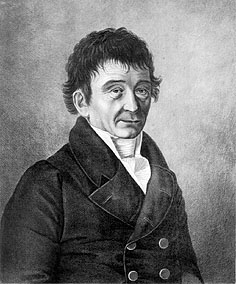
Podaję z Wikipedii anglojęzycznej, bo oczywiście w tzw „POLSKIEJ WIKIPEDII” przeczytacie, że według nich był on Niemcem!!! Jest to oczywisty efekt XIX wiecznej ekspansji Pruskiej i XX wiecznej Hitlerowskiej, na który ani Węgry ani Słowacja się nie godzą. Polska jednak kontynuuje niemiecką narracje historyczną. Niejednoznaczność brzmienia nazwiska w języku niemieckim i jego znaczenie mówi wszystko o pochodzeniu tej rodziny ze Słowacji.
Tłumaczenie przez Google-Ttłumacza z angielskiego nie sprawia trudności, więc nie tłumaczę tego tekstu.
From Wikipedia, the free encyclopedia
Ernst Florens Friedrich Chladni (German: [ˈɛʁnst ˈfloːʁɛns ˈfʁiːdʁɪç ˈkladnɪ]; 30 November 1756 – 3 April 1827) was a German physicist and musician. His most important work, for which he is sometimes labeled the father of acoustics, included research on vibrating plates and the calculation of the speed of sound for different gases.[1] He also undertook pioneering work in the study of meteorites and is regarded by some as the father of meteoritics.[2]
Although Chladni was born in Wittenberg in Saxony, his family originated from Kremnica, then part of the Kingdom of Hungary and today a mining town in central Slovakia. Chladni has therefore been identified as German,[3][4] Hungarian[5] and Slovak.[6]
Chladni came from an educated family of academics and learned men. Chladni’s great-grandfather, the Lutheran clergyman Georg Chladni (1637–92), had left Kremnica in 1673 during the Counter Reformation. Chladni’s grandfather, Martin Chladni (1669–1725), was also a Lutheran theologian and, in 1710, became professor of theology at the University of Wittenberg. He was dean of the theology faculty in 1720–1721 and later became the university’s rector. Chladni’s uncle, Justus Georg Chladni (1701–1765), was a law professor at the university.[citation needed] Another uncle, Johann Martin Chladni (1710–1759), was a theologian, a historian and a professor at the University of Erlangen and the University of Leipzig.
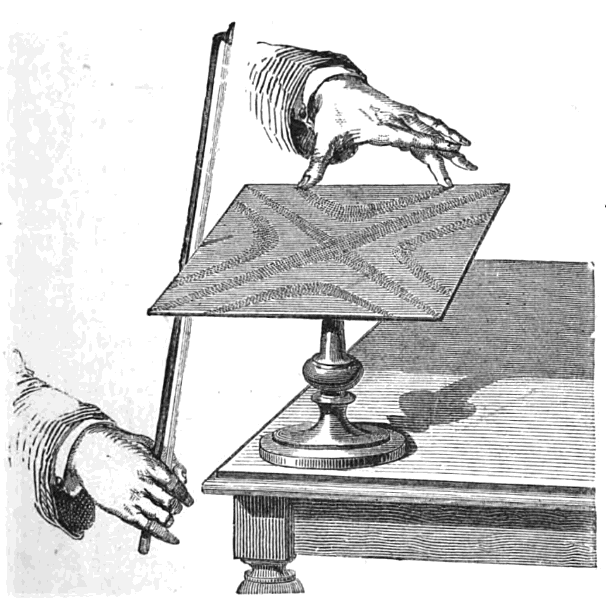
Chladni’s father, Ernst Martin Chladni (1715–1782), was a law professor and rector of the University of Wittenberg. He had joined the law faculty there in 1746.[citation needed] Chladni’s mother was Johanna Sophia and he was an only child.[7] His father disapproved of his son’s interest in science and insisted that Chladni become a lawyer.[6][8][9]
Chladni studied law and philosophy in Wittenberg and Leipzig, obtaining a law degree from the University of Leipzig in 1782. That same year, his father died and he turned to physics in earnest.[8][9]
One of Chladni’s best-known achievements was inventing a technique to show the various modes of vibration on a rigid surface, known as Chladni figures due to the various shapes or patterns created by various modes. When resonating, a plate or membrane is divided into regions that vibrate in opposite directions, bounded by lines where no vibration occurs (nodal lines). Chladni repeated the pioneering experiments of Robert Hooke who, on July 8, 1680, had observed the nodal patterns associated with the vibrations of glass plates. Hooke ran a violin bow along the edge of a plate covered with flour and saw the nodal patterns emerge.[10][8][9][11]
Chladni’s technique, first published in 1787 in his book Entdeckungen über die Theorie des Klanges („Discoveries in the Theory of Sound”), consisted of drawing a bow over a piece of metal whose surface was lightly covered with sand. The plate was bowed until it reached resonance, when the vibration causes the sand to move and concentrate along the nodal lines where the surface is still, outlining the nodal lines. The patterns formed by these lines are what are now called Chladni figures. Similar nodal patterns can also be found by assembling microscale materials on Faraday waves.[12]
Chladni had visited the Paris Academy in 1808 and had demonstrated the vibration patterns before an audience that included not only the leading French scientists but Napoleon himself, Napoleon set a prize for the best mathematical explanation. Sophie Germain’s answer, although rejected due to flaws, was the only entry with the correct approach.[13]
Variations of this technique are still commonly used in the design and construction of acoustic instruments such as violins, guitars, and cellos. Since the 20th century, it has become more common to place a loudspeaker driven by an electronic signal generator over or under the plate to achieve a more accurate adjustable frequency.
In quantum mechanics, Chladni figures („nodal patterns”) are known to be related to the solutions of the Schrödinger equation for one-electron atoms, and the mathematics describing them was used by Erwin Schrödinger to arrive at the understanding of electron orbitals.[14]
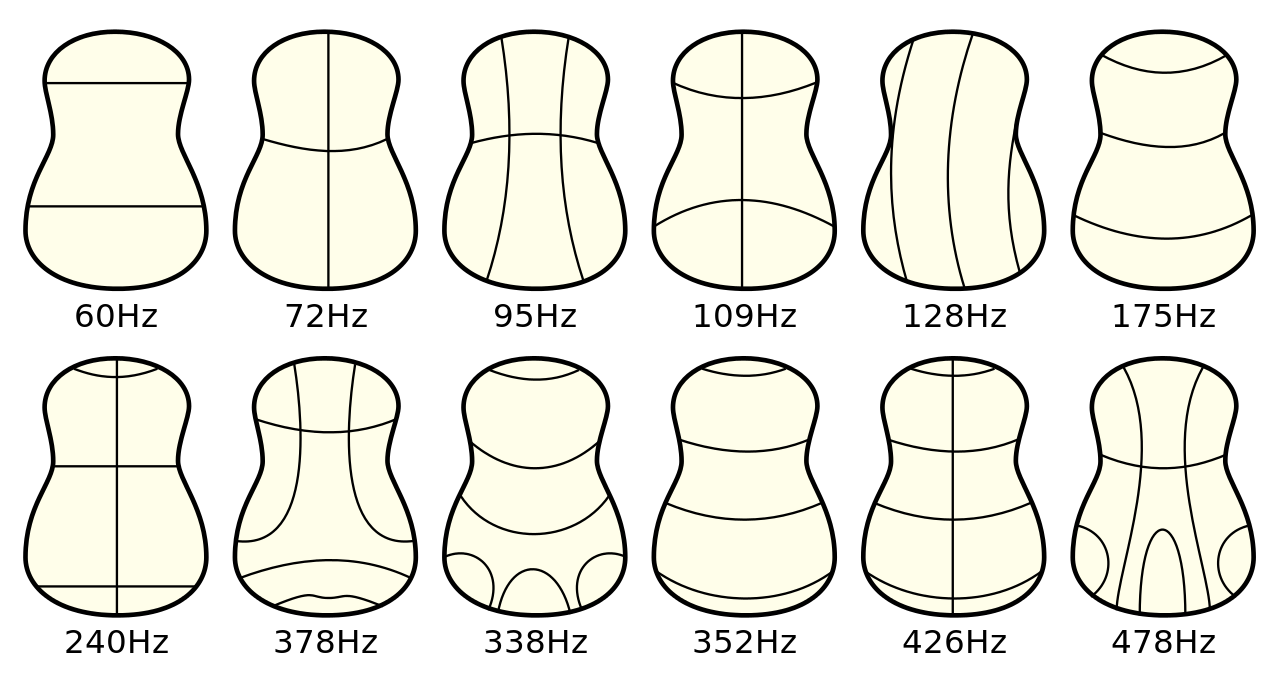
Chladni patterns of a guitar backplate
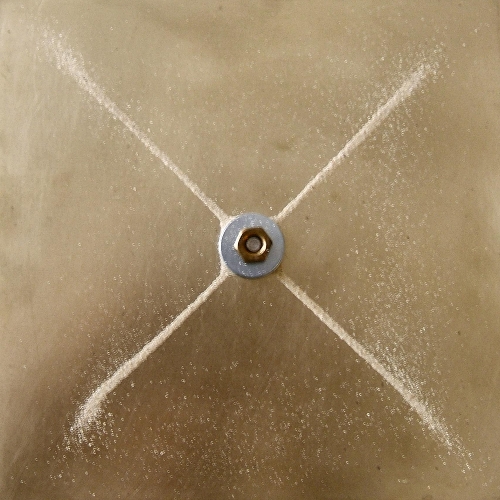
Chladni figure on a rectangular plate supported in center
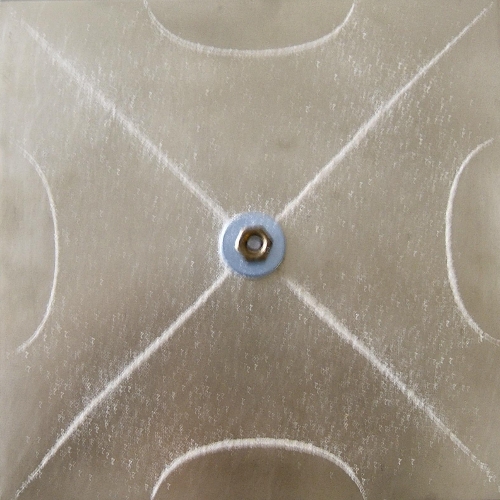
Another mode of the same plate
więcej u źródła: https://en.wikipedia.org/wiki/Ernst_Chladni
Cymatyka
Cymatyka- więcej niż muzyka
https://www.youtube.com/watch?v=t1w17-3hQLA
https://www.youtube.com/watch?v=narbo5d82NU
https://www.youtube.com/watch?v=narbo5d82NU
oraz na blogu:
Ernest Chladni (1756 – 1827) – słowacki i śląski fizyk i geolog oraz jego cymatyka i meteoryty
